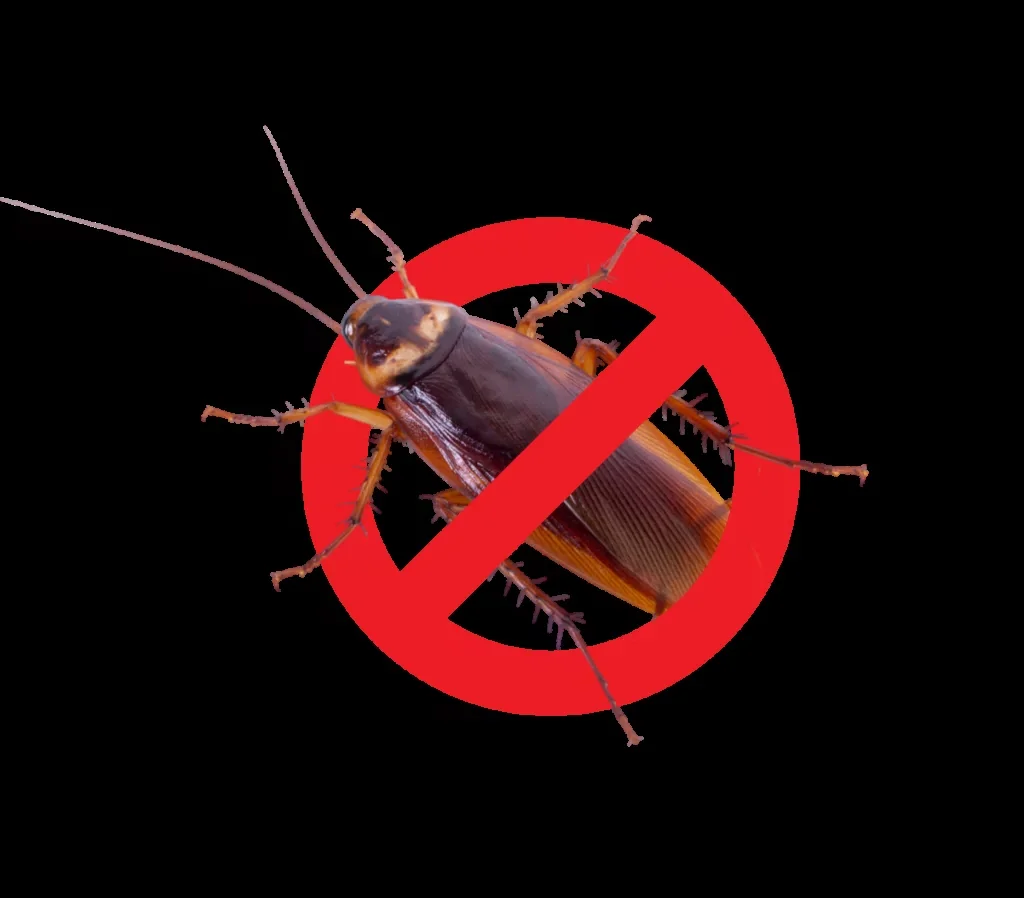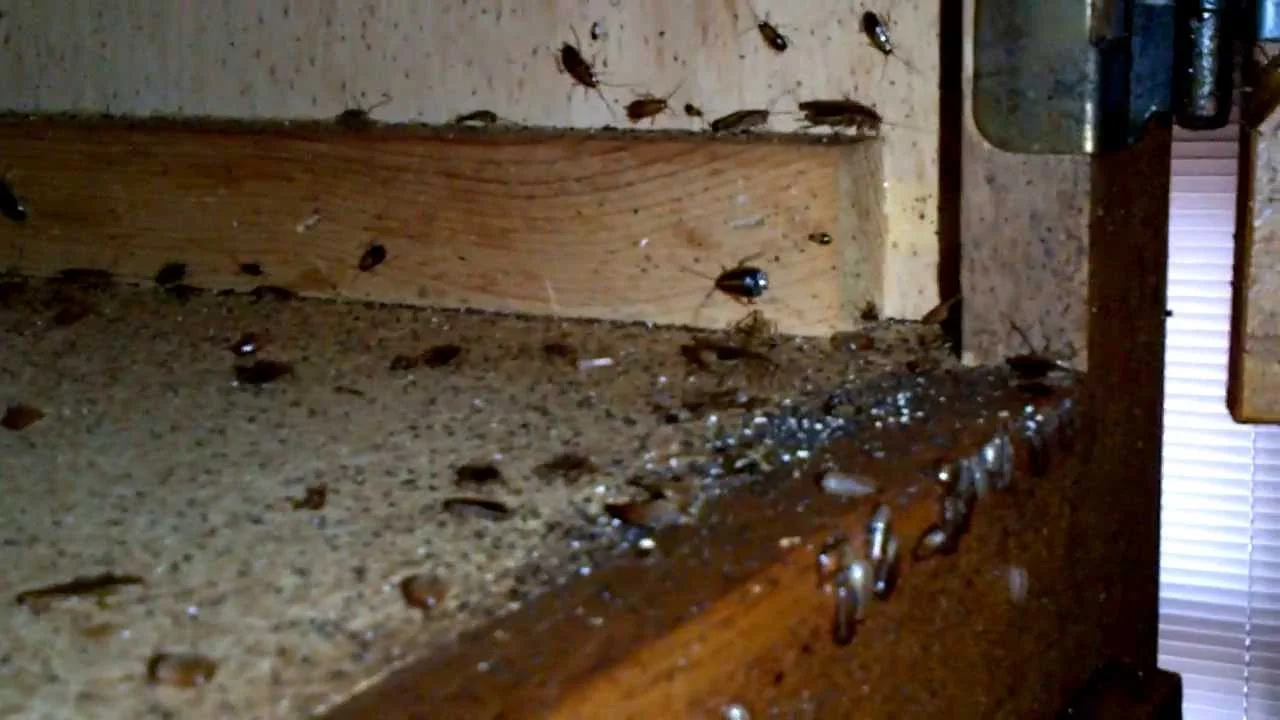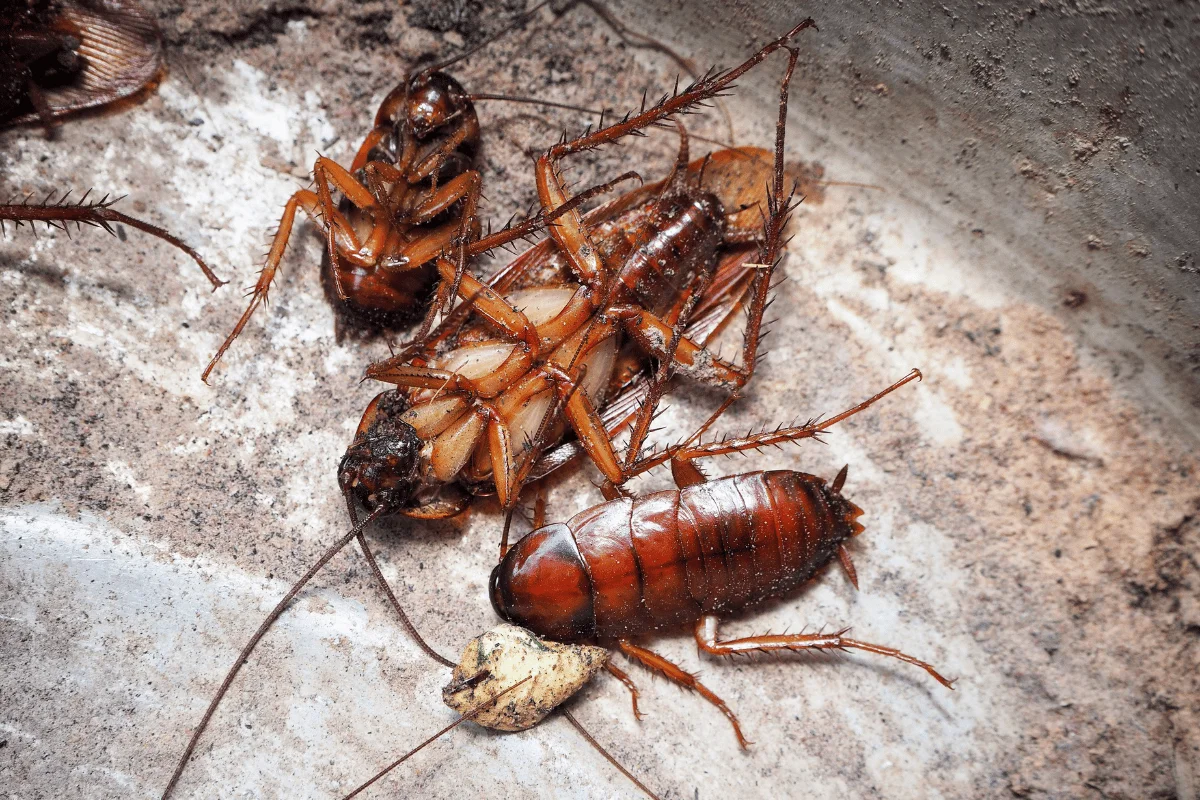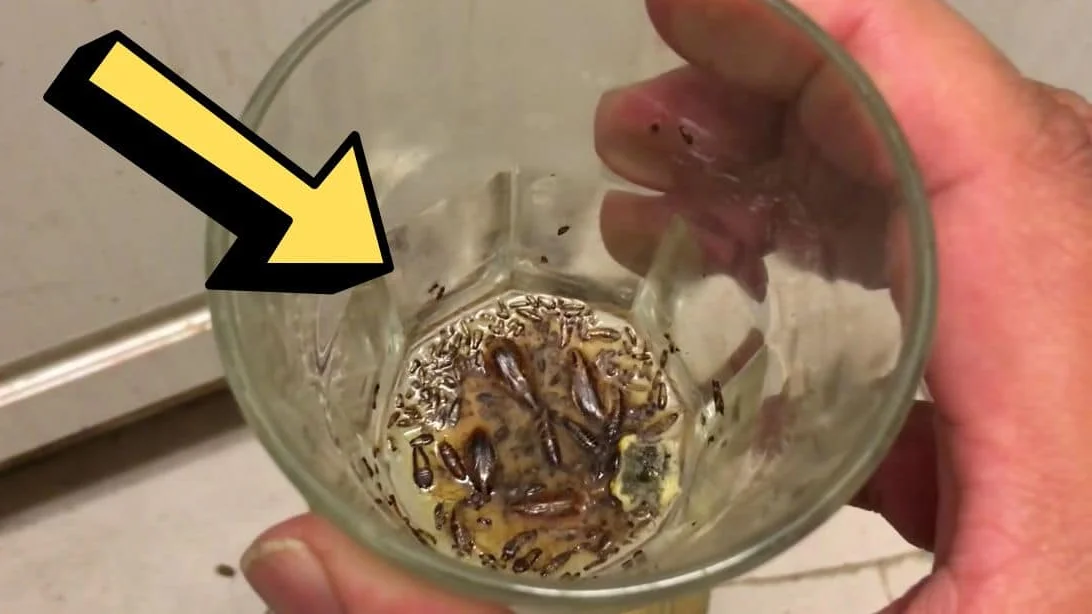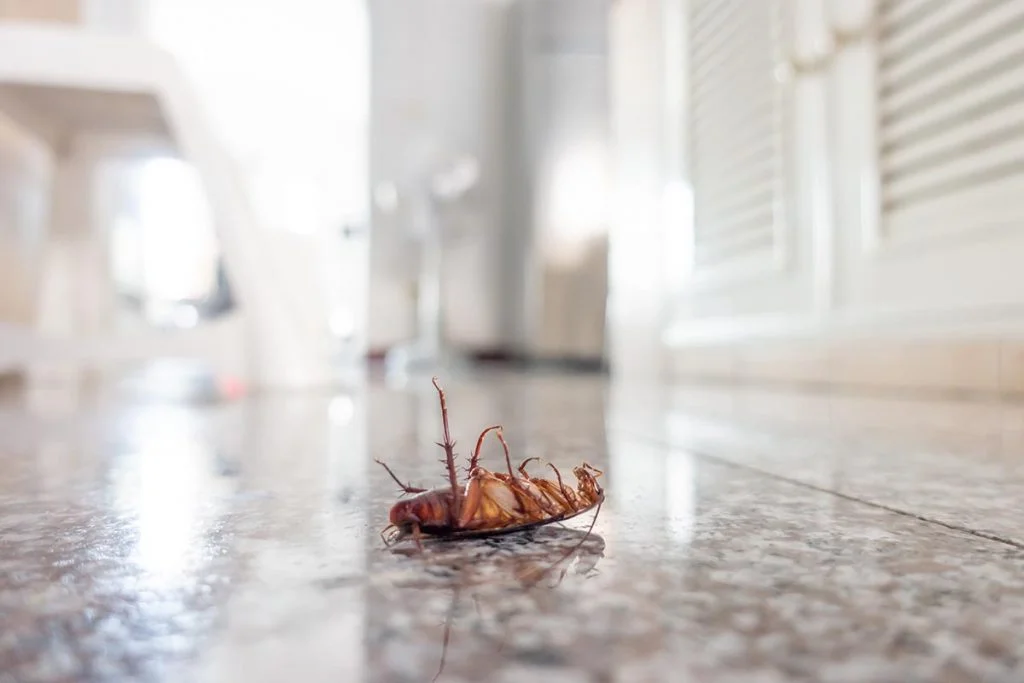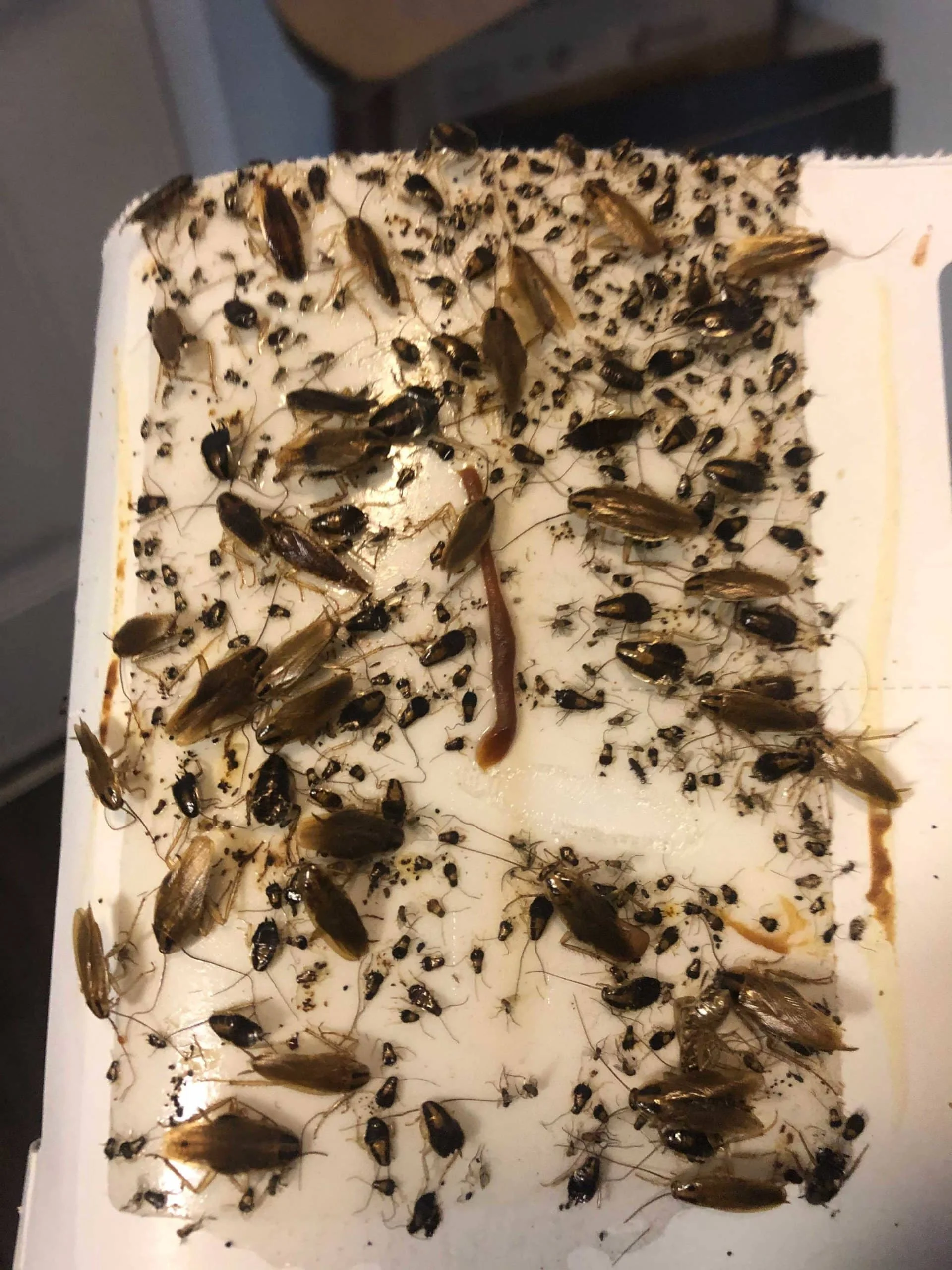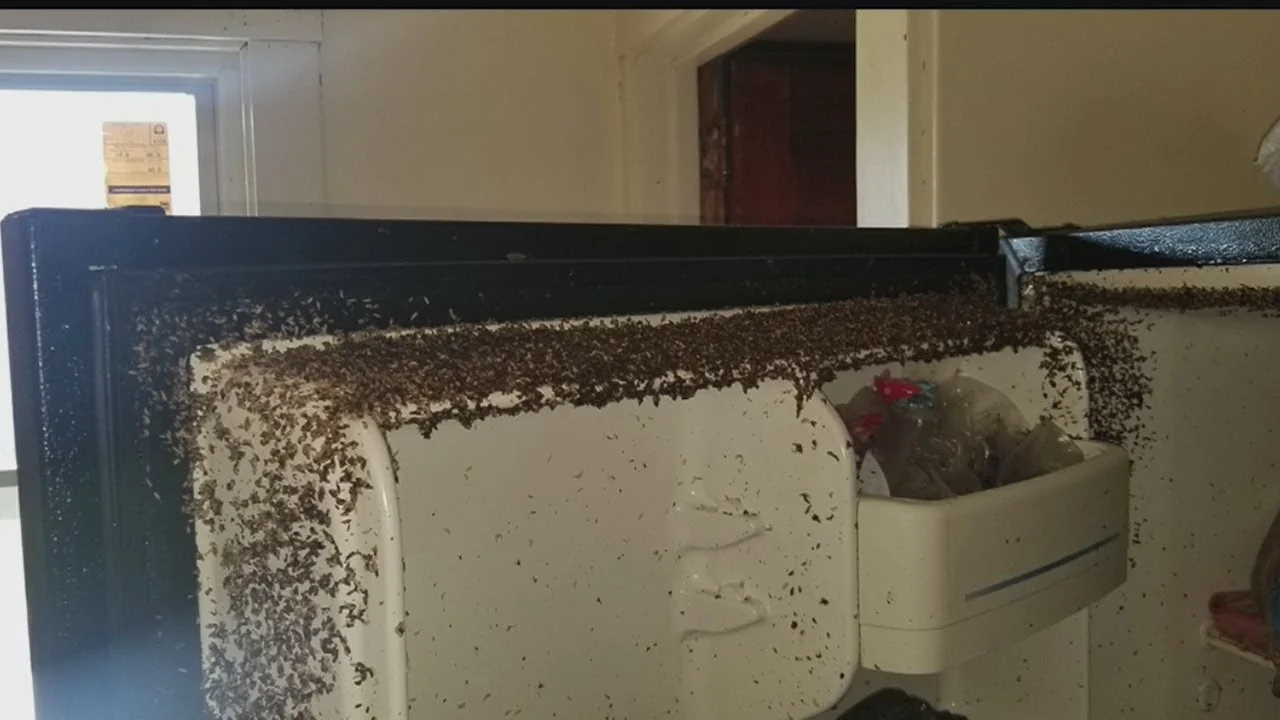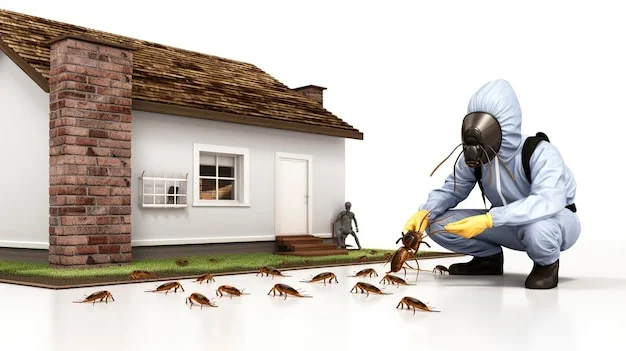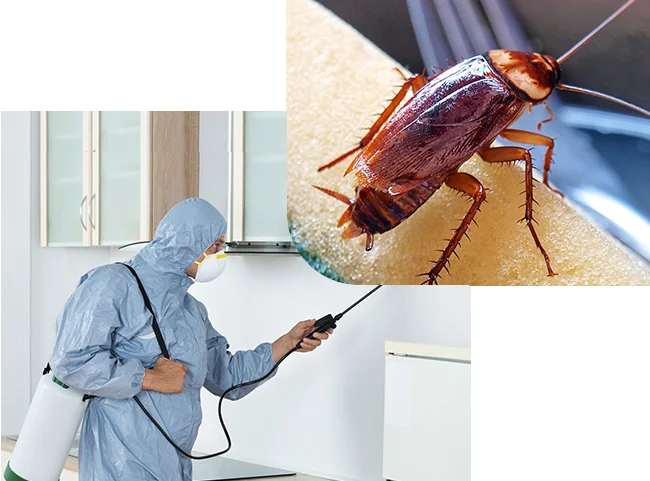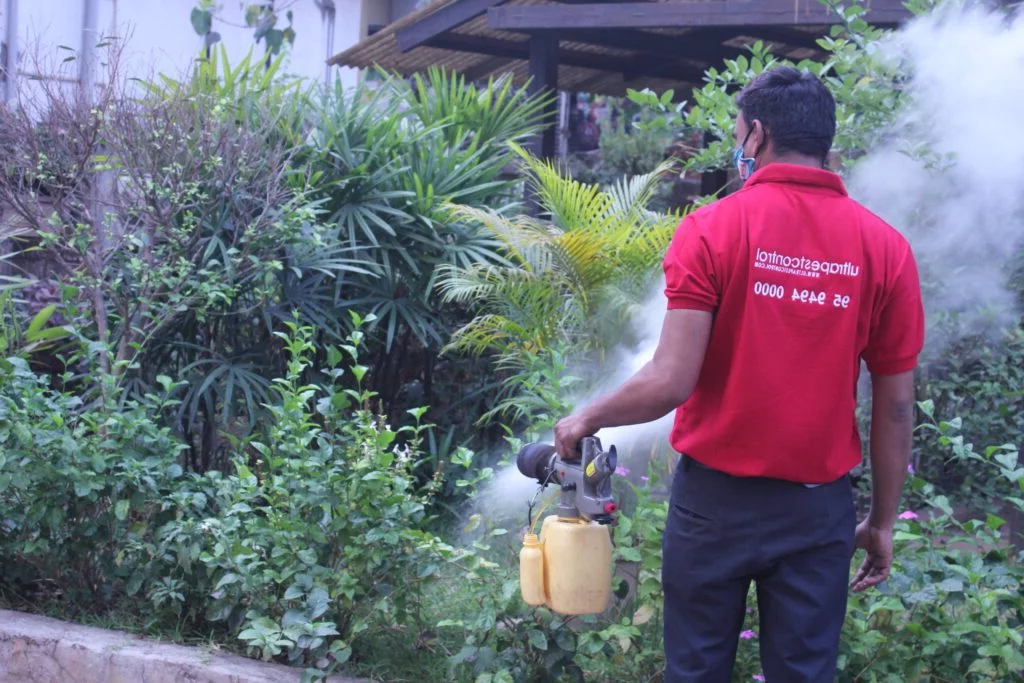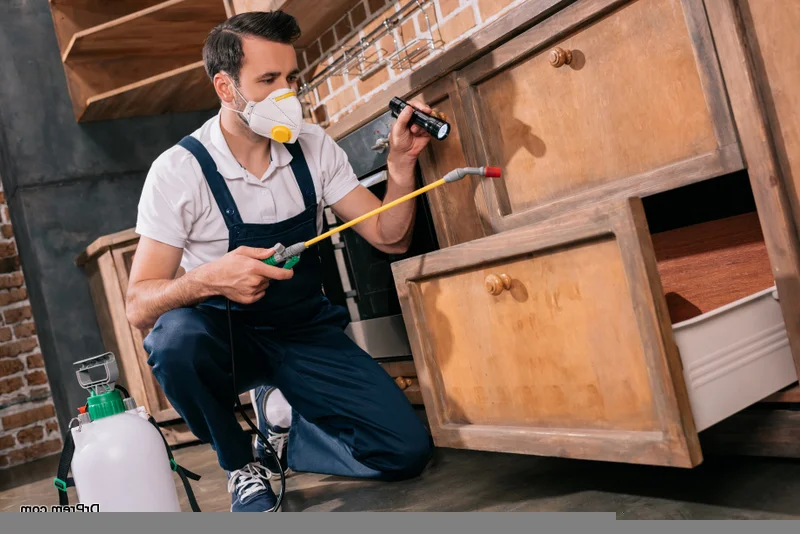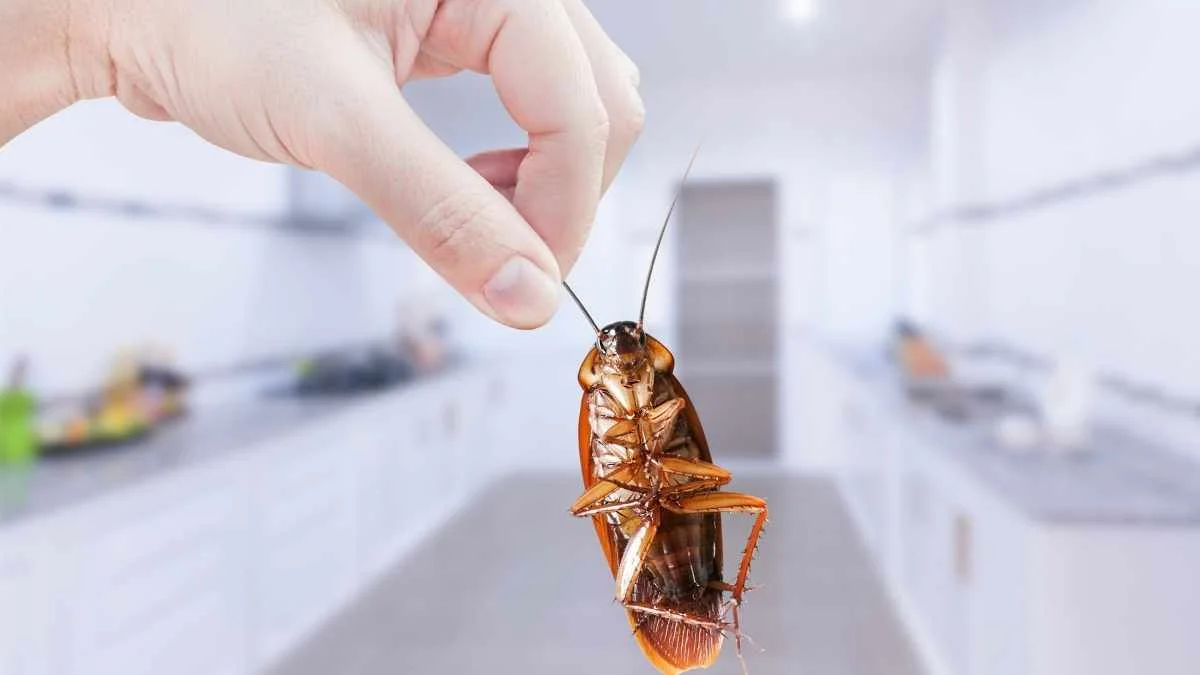Few pests trigger as much immediate disgust as cockroaches scurrying across your kitchen floor. Beyond the discomfort of sharing your space with these resilient insects, cockroaches pose serious health risks through contamination of food preparation surfaces, trigger asthma and allergies, and can damage property with their nesting and feeding activities. Cockroach control presents unique challenges due to these insects' remarkable adaptability – they've survived on Earth for over 300 million years by evolving extraordinary survival mechanisms.
This comprehensive guide provides essential information about cockroach identification, behavior patterns, the health risks they pose, and most importantly, how professional cockroach extermination services can effectively eliminate these persistent pests from your home or business. Whether you're currently facing an infestation or want to prevent future problems, understanding these adaptable insects is the first step toward maintaining a cockroach-free environment.
Dealing with cockroaches? Don't let them multiply! Our professional cockroach removal experts can eliminate your infestation quickly and effectively.
Contact us today for fast, reliable service!
Common Cockroach Species
While there are approximately 4,600 cockroach species worldwide, only a small number regularly infest homes and businesses. Understanding the specific species you're dealing with is crucial for effective control, as each type has different habitats, behaviors, and control challenges:
German Cockroach
German cockroach - the most common indoor species
German cockroaches (Blattella germanica) are the most common indoor species and a primary target for cockroach control services.
Key Characteristics:
- Appearance: Small (1/2 to 5/8 inch long), light brown to tan with two distinctive parallel dark stripes running from head to wings
- Habitat: Primarily indoor pests thriving in warm, humid environments; concentrate near food and water sources in kitchens and bathrooms
- Reproduction: Extraordinarily prolific—females produce up to 50 eggs per ootheca (egg case) and can generate 4-8 oothecae in their lifetime
- Behavior: Nocturnal, highly adaptable, can squeeze through extremely small cracks and crevices
- Diet: Omnivorous scavengers consuming virtually any organic matter; can survive on soap, glue, toothpaste, or book bindings when food is scarce
German cockroaches are particularly challenging to control due to their rapid reproduction rate, small size allowing access to countless hiding places, and increasing resistance to many insecticides. A single pregnant female can theoretically produce up to 30,000 descendants in just one year, making early intervention critical.
American Cockroach
American cockroaches (Periplaneta americana), often called "palmetto bugs" or "water bugs," are the largest common household cockroach species.
Key Characteristics:
- Appearance: Large (1.5 to 2 inches long), reddish-brown with a yellowish figure-8 pattern on the area behind the head
- Habitat: Prefer warm, humid environments; commonly found in basements, crawl spaces, sewers, steam tunnels, and around drains
- Reproduction: Females produce 10-15 oothecae throughout their lifetime, each containing 14-16 eggs
- Behavior: Excellent flyers when mature; can travel between floors through plumbing and utility chases
- Lifespan: Remarkably long-lived, with adults surviving 1-2 years
American cockroaches typically establish their main colonies in dark, protected areas with high humidity, often in basements or sewers, then forage throughout buildings. Their size makes them particularly disturbing when encountered, though they typically reproduce more slowly than German cockroaches.
American cockroach - often found near drains and in basements
Oriental Cockroach
Oriental cockroach - prefers cool, damp environments
Oriental cockroaches (Blatta orientalis), sometimes called "water bugs" or "black beetles," prefer cooler temperatures than other species.
Key Characteristics:
- Appearance: Medium-sized (1 to 1.25 inches long), very dark brown to black with a greasy-looking sheen; females have underdeveloped wings, while males have wings covering about 3/4 of their abdomen
- Habitat: Thrive in damp, cool areas like crawl spaces, basements, around drains, and beneath refrigerators; often enter buildings through sewer connections
- Reproduction: Females produce 5-10 oothecae, each containing about 16 eggs
- Behavior: Move more slowly than other cockroach species; cannot climb smooth vertical surfaces easily
- Diet: Feed on a variety of organic matter, particularly decaying material
Oriental cockroaches emit a strong, unpleasant musty odor. They frequently travel through sewer pipes and drains, potentially spreading dangerous bacteria throughout their environment. Their preference for cooler temperatures means they're often found in basements, crawl spaces, and around building foundations.
Brown-Banded Cockroach
Brown-banded cockroaches (Supella longipalpa) are distinctive for their distribution throughout homes rather than concentrating near water sources.
Key Characteristics:
- Appearance: Small (1/2 inch long), light brown with two distinctive light bands across wings and abdomen
- Habitat: Prefer warmer, drier environments than other cockroach species; commonly found in higher locations within rooms (upper cabinets, behind picture frames, near ceilings)
- Reproduction: Females carry oothecae for only 24-48 hours before attaching them to surfaces; each contains about 16 eggs
- Behavior: More active jumpers and fliers than German cockroaches; males fly when disturbed
- Diet: Omnivorous, with a preference for starchy foods
Unlike other common species that concentrate in kitchens and bathrooms, brown-banded cockroaches distribute themselves more widely throughout buildings. This dispersal behavior makes them particularly challenging to control, often requiring whole-structure treatment approaches rather than targeted applications in moisture-prone areas.
Brown-banded cockroach with characteristic light bands
Other Cockroach Species
Depending on your location, you may encounter other cockroach species:
-
Australian Cockroach: Similar to American cockroaches but with yellow markings on the forewings; common in southern states and commercial greenhouses
-
Smoky Brown Cockroach: Large, mahogany-colored species common in the southeastern United States; primarily outdoor pests that occasionally invade homes
-
Pennsylvania Wood Cockroach: Outdoor species occasionally entering homes accidentally; rarely establish indoor infestations
-
Asian Cockroach: Nearly identical to German cockroaches but with stronger flying capabilities; primarily outdoor pests attracted to light
Regional Cockroach Variations
Cockroach distribution varies significantly by region and building type. Our cockroach control specialists can identify the specific species in your home or business and develop a targeted treatment strategy based on their unique behaviors and habitats. This precise identification is crucial for effective control, as different species respond differently to various treatment methods.
Cockroach Biology & Behavior
Understanding cockroach biology and behavior provides insight into why these pests are so persistent and how to effectively control them:
Cockroaches can squeeze through incredibly narrow spaces
Physical Capabilities
Cockroaches possess remarkable physical adaptations that contribute to their survival and control challenges:
- Exceptional Mobility: Can travel at speeds up to 3 miles per hour, making quick escapes from threats
- Flattened Bodies: Capable of squeezing through cracks as thin as 1/16 inch (thickness of a quarter)
- Respiratory System: Can hold their breath for up to 40 minutes and survive submersion in water
- Resilience: Capable of surviving without their head for weeks (they breathe through spiracles on their body segments)
- Sensory Advantages: Detect air movement as subtle as what we would feel during a whisper from across a room
These physical abilities explain why cockroaches can access seemingly protected areas of homes and businesses, detect threats before treatment occurs, and withstand conditions that would kill most other insects.
Life Cycle
The cockroach life cycle consists of three stages, with variations in development time by species:
-
Egg Stage: Eggs are produced in protective oothecae (egg cases); German cockroaches carry these until hatching while other species deposit them in hidden locations
-
Nymph Stage: Immature cockroaches resemble adults but are smaller and wingless; undergo 5-8 molts before reaching adulthood; German cockroach nymphs mature in as little as 36 days
-
Adult Stage: Fully developed with functional wings (in most species); reproductive capabilities begin shortly after final molt
-
Longevity: Varies by species—German cockroaches typically live 100-200 days, while American cockroaches can survive 1-2 years
This rapid development cycle, particularly in German cockroaches, enables populations to grow exponentially within short periods, making early professional intervention crucial for effective cockroach control.
Behavioral Patterns
Cockroach behavior influences both infestation patterns and effective control strategies:
- Nocturnal Activity: Primarily active at night, hiding during daylight hours; sightings during daytime often indicate severe infestations
- Aggregation: Tendency to cluster together, responding to pheromones that indicate suitable habitats
- Thigmotropism: Preference for body contact with surfaces, explaining their tendency to hide in cracks and crevices
- Travel Patterns: Establish regular runways between harborage and food sources; rarely venture far from these paths
- Adaptive Learning: Can modify behavior to avoid dangers, including developing aversion to certain baits or traps
Understanding these behavioral traits allows for strategic placement of baits and traps along natural travel paths and helps identify key treatment areas for most effective control.
Cockroaches typically aggregate in protected harborage areas
Feeding Habits
Cockroaches have highly adaptable feeding behaviors that contribute to their success as pests:
-
Diet Versatility: Omnivorous scavengers consuming virtually any organic matter; prefer starches, sugars, and protein but can survive on book bindings, soap, and even fingernail clippings when necessary
-
Water Requirements: Essential need for regular water access; Oriental and American cockroaches require significantly more moisture than German and brown-banded species
-
Foraging Range: Generally stay within 10-12 feet of their harborage areas when food and water are plentiful; will travel farther when resources are scarce
-
Contamination: Regurgitate digestive fluids onto food and defecate while feeding, extensively contaminating surfaces and food sources
-
Cannibalism: Will consume dead or dying cockroaches, particularly important in bait strategies that utilize secondary kill effects
These feeding habits make comprehensive sanitation a crucial component of cockroach control programs while also providing opportunities for effective baiting strategies.
Health & Property Risks
Cockroach infestations pose significant risks to both health and property, making professional cockroach extermination essential:
Cockroaches contaminate surfaces with bacteria and allergens
Disease Transmission
Cockroaches can carry and transmit numerous pathogens:
- Bacterial Pathogens: Carry over 33 kinds of bacteria, including E. coli and Salmonella, linked to food poisoning
- Parasite Vectors: Potential carriers of parasite eggs, including those causing hookworm, pinworm, and tapeworm infections
- Transmission Mechanisms: Spread pathogens through:
- Mechanical transfer on body parts when crawling across surfaces
- Fecal contamination of food and preparation areas
- Regurgitation of digestive fluids during feeding
- Pathogen Viability: Bacteria can remain viable in cockroach digestive tracts for months, creating ongoing contamination risks
According to the World Health Organization, cockroaches are recognized as carriers of intestinal diseases such as diarrhea, dysentery, typhoid fever, and cholera, particularly in environments where sanitation is poor.
Allergies & Asthma
Cockroaches are among the most significant indoor allergen sources:
-
Allergen Production: Allergens found in cockroach saliva, feces, and body parts; shed skins continue releasing allergens after molting
-
Asthma Trigger: Major asthma trigger, particularly in urban environments; the National Institute of Environmental Health Sciences identifies cockroach allergens as a primary trigger for asthma attacks in children
-
Exposure Pathways: Allergens become airborne when disturbed, entering respiratory systems through normal breathing
-
Symptom Range: Allergic reactions range from nasal congestion and skin rashes to severe asthmatic responses requiring emergency care
-
Persistence: Allergens remain potent long after cockroaches are eliminated, requiring thorough professional cleaning
Research suggests that 23-60% of urban residents with asthma are sensitive to cockroach allergens, with higher rates among those living in multi-unit housing where infestations are more common.
Psychological Impact
The psychological effects of cockroach infestations can be significant:
- Anxiety & Stress: Persistent worry about encountering cockroaches or bringing them to social gatherings
- Sleep Disruption: Difficulty sleeping due to concerns about cockroach activity during nighttime hours
- Social Embarrassment: Reluctance to invite guests, leading to social isolation
- Stigma: Unwarranted feelings of shame or being judged, despite infestations occurring in clean homes
- Obsessive Behaviors: Development of excessive cleaning or checking behaviors attempting to manage infestations
The psychological burden of cockroach infestations often extends beyond the physical health impacts, affecting quality of life and mental well-being even after the pests are eliminated.
Professional control provides peace of mind beyond pest elimination
Property Damage
While less destructive than some pests, cockroaches can cause various types of property damage:
-
Food Contamination: Rendering food products unusable through contamination, creating economic losses
-
Paper Products: Damage to books, documents, and wallpaper through feeding on starchy adhesives
-
Fabric & Upholstery: Staining from fecal material, particularly noticeable on light-colored fabrics
-
Electronic Equipment: Attraction to warm electronic devices, occasionally causing short circuits
-
Odor Problems: Persistent musty, oily odors in heavily infested areas that can permeate belongings
In commercial settings, the economic impact extends beyond physical damage to include failed health inspections, reputation damage, lost business, and potential liability from contamination-related illnesses.
Vulnerability Factors
Health risks from cockroach infestations are particularly significant for vulnerable populations. Children, elderly individuals, people with compromised immune systems, and those with pre-existing respiratory conditions face greater health risks from exposure to cockroach allergens and pathogens. Multi-unit housing residents also face increased challenges as infestations can spread between units despite individual sanitation efforts.
Don't compromise your family's health! Our professional cockroach removal services eliminate infestations and prevent future problems.
Schedule a service today for a cockroach-free environment!
Signs of Cockroach Infestation
Recognizing cockroach infestation signs allows for early intervention before populations explode:
Cockroach droppings resembling coffee grounds or pepper
Visual Evidence
- Droppings: Vary by species:
- German cockroaches: Small, dark specks resembling ground pepper
- Larger species: Cylindrical, ridged droppings resembling mouse droppings or coffee grounds
- Egg Cases (Oothecae): Tan, brown, or black capsules about 1/4 to 3/8 inch long:
- German cockroach cases contain about 30-40 eggs
- American cockroach cases slightly larger with 14-16 eggs
- Shed Skins: Light-colored, empty shells left behind after molting; accumulate in harborage areas
- Smear Marks: Dark, irregular marks along walls and baseboards in heavy infestations
- Live Cockroaches: Daytime sightings often indicate severe infestations, as cockroaches typically hide during daylight hours
Olfactory Evidence
Cockroach infestations often produce distinctive odors:
-
Characteristic Odor: Persistent, musty, oily smell often described as "fetid" or "acrid" in areas of heavy infestation
-
Source of Odor: Produced by decomposing bodies and aggregation pheromones secreted by living cockroaches
-
Severity Indicator: Noticeable odor typically indicates established, larger infestations
-
Location Significance: Most detectable near primary harborage areas where cockroaches congregate
This distinctive odor can persist even after cleaning and may transfer to stored food, plates, or clothing in heavily infested environments.
Behavioral Evidence
Changes in household pest dynamics can indicate cockroach presence:
- Nighttime Activity: Scurrying sounds within walls, cabinets, or appliances during quiet nighttime hours
- Pet Behavior: Unusual pet interest in specific areas like baseboards, cabinet corners, or appliances
- Food Packaging: Damage to food packaging, particularly paper or cardboard containers
- Unclear Allergic Reactions: Unexplained increase in allergic symptoms or asthma attacks, particularly during sleep
- Neighbor Reports: Infestations in adjacent units in multi-unit buildings, as cockroaches readily travel through shared walls, floors, and utility connections
These behavioral indicators, while subtle, can help identify infestations before significant visual evidence appears, allowing for earlier and more effective intervention.
Professional inspection can detect subtle infestation signs
Common Hiding Places
Knowing where to look for evidence can help identify infestations:
-
Kitchen Areas: Behind refrigerators, under sinks, inside appliance motors, along cabinet edges, and behind wall outlets
-
Bathroom Locations: Under sink cabinets, around plumbing penetrations, behind toilets, and inside shower drains
-
General Household: Inside electronic devices, behind picture frames, beneath furniture, inside hollow doors, and along crown molding
-
Structural Areas: Within wall voids, above suspended ceilings, inside floor drains, and around utility penetrations
-
Species-Specific Preferences: German cockroaches prefer warm, humid areas near food while brown-banded cockroaches often inhabit higher, drier locations
Professional cockroach control technicians are trained to inspect these common harborage areas, identifying subtle evidence that might be overlooked during casual observation.
Infestation Assessment
The quantity, distribution, and types of evidence help determine the severity, age, and species involved in an infestation. Professional technicians use these indicators to develop targeted control strategies and determine the appropriate treatment approach for your specific situation.
Professional Cockroach Control Methods
Effective cockroach management requires a comprehensive approach addressing current infestations while preventing future problems. Professional cockroach extermination employs multiple strategies tailored to your specific situation:
Thorough Inspection & Assessment
Thorough inspection forms the foundation of successful treatment
Every effective cockroach control program begins with a comprehensive property assessment:
- Species Identification: Determining exactly which cockroach species are present, as control strategies vary by species
- Infestation Mapping: Identifying primary harborage areas, travel routes, and extent of the infestation
- Contributing Factors: Assessing moisture issues, food availability, and structural conditions that support infestations
- Specialized Tools: Using flushing agents, monitoring traps, and flashlights to detect activity in hidden areas
- Documentation: Creating detailed records of findings to develop targeted treatment plans and track progress
Professional technicians are trained to inspect areas often overlooked, including wall voids, cabinet undersides, appliance motors, and plumbing penetrations where cockroaches frequently harbor.
Integrated Treatment Approaches
Professional control utilizes multiple complementary treatment methods:
- Targeted Insecticide Applications: Applying professional-grade residual insecticides to cracks, crevices, and voids where cockroaches hide and travel
- Baiting Systems: Strategically placing gel baits, bait stations, or granular baits in high-activity areas
- Gel baits leverage cockroaches' feeding habits and cannibalism for colony elimination
- Different bait formulations target specific species' dietary preferences
- Insect Growth Regulators (IGRs): Applying compounds that prevent immature cockroaches from developing into reproductive adults
- Dust Formulations: Treating deep voids and inaccessible areas with desiccant dusts that damage cockroaches' waxy outer coating
- Trapping Systems: Using monitoring traps to assess population levels and treatment efficacy
This multi-faceted approach addresses different life stages and behaviors simultaneously, overcoming resistance issues that often develop with single-treatment approaches.
Precise application of professional-grade treatments
Habitat Modification
Altering the environment to make it less hospitable to cockroaches is essential for long-term control:
-
Moisture Management: Addressing plumbing leaks, condensation issues, and standing water sources that attract cockroaches
-
Sanitation Improvements: Implementing improved cleaning protocols to eliminate food sources and reduce attractants
-
Structural Repairs: Sealing cracks, crevices, and gaps that provide harborage or travel routes between areas
-
Ventilation Improvements: Enhancing airflow in humid areas to reduce moisture that supports cockroach populations
-
Storage Modifications: Recommending changes to storage practices that eliminate harborage opportunities
These environmental modifications address the root causes of infestations, making spaces significantly less attractive to cockroaches and complementing direct control methods.
Commercial Kitchen Treatments
Commercial kitchens require specialized treatment approaches
Commercial food service environments present unique cockroach control challenges:
- Specialized Protocols: Tailored approaches for food preparation areas that maintain safety while ensuring efficacy
- Equipment-Specific Treatments: Addressing infestations in commercial appliances, walk-in coolers, and food storage areas
- Compliance-Oriented Solutions: Treatment documentation and monitoring that supports health department compliance
- Overnight Services: Scheduling treatments during non-operational hours to minimize business disruption
- Staff Training: Educating kitchen personnel on prevention practices and early detection
Our commercial cockroach control programs recognize the unique operational requirements and regulatory standards for food service businesses, providing effective solutions that maintain compliance and protect reputation.
Follow-Up & Monitoring
Comprehensive cockroach management includes ongoing assessment and maintenance:
-
Scheduled Inspections: Regular follow-up visits to evaluate treatment efficacy and identify any remaining activity
-
Strategic Monitoring: Placement of monitoring devices in key locations to detect any resurgence in activity
-
Adaptive Treatments: Adjusting control strategies based on monitoring results and evolving infestation patterns
-
Documentation: Maintaining detailed treatment and monitoring records for ongoing program assessment
-
Preventive Maintenance: Scheduled services to maintain protection against reinfestation
This ongoing monitoring and maintenance approach ensures that initial control success translates into long-term protection, addressing cockroach populations' remarkable resilience and reproductive capacity.
Integrated Pest Management (IPM) Approach
Our cockroach extermination programs follow IPM principles, combining multiple control strategies while minimizing environmental impact. This comprehensive approach addresses both immediate infestation concerns and underlying causes, creating sustainable solutions rather than temporary fixes. By addressing cockroach biology, behavior, and habitat requirements, IPM creates long-term protection while reducing reliance on chemical treatments.
Our professional cockroach removal experts combine multiple strategies for comprehensive protection against these persistent pests.
Contact us today for a customized cockroach control plan!
DIY vs. Professional Cockroach Control
While many homeowners attempt do-it-yourself cockroach control, there are significant differences between DIY approaches and professional services:
| Consideration |
DIY Approach |
Professional Service |
| Detection Ability |
Limited to visible areas; often misses hidden infestations in wall voids, behind appliances, or beneath cabinets
|
Comprehensive inspection with specialized tools to locate hidden harborage areas and identify the full extent of infestation
|
| Treatment Access |
Restricted to accessible areas; difficult to treat inside walls, ceiling voids, or appliance interiors
|
Complete access to all harborage areas using specialized equipment and techniques to reach hidden populations
|
| Products & Equipment |
Limited to retail-grade products with lower concentrations; restricted formulation options
|
Access to professional-grade insecticides, baits, and IGRs at optimal concentrations with formulations unavailable to consumers
|
| Resistance Management |
Single-product approach often leads to resistance; limited rotation options
|
Strategic product rotation and combination treatments prevent resistance development through multiple modes of action
|
| Safety & Precision |
Risk of improper application; potential overuse in accessible areas and undertreatment in crucial hidden zones
|
Precise application by trained technicians with proper equipment; targeted treatments that maximize efficacy while minimizing exposure
|
| Time & Convenience |
Requires significant time investment for repeated applications; trial-and-error approach often extends elimination timeline
|
Efficient service by experienced professionals; systematic approach shortens elimination timeline with scheduled maintenance requiring minimal homeowner time
|
| Long-term Results |
Often achieves temporary suppression rather than elimination; limited preventive capacity
|
Addresses root causes for lasting results; implements comprehensive prevention strategies for continued protection
|
Professional services utilize specialized equipment and expertise
When to Call Professionals
While minor, isolated cockroach sightings might be addressable with DIY methods, professional cockroach extermination is recommended in these situations:
- Multiple Sightings: Seeing cockroaches regularly, especially during daylight hours (indicating larger populations)
- Failed DIY Attempts: Continued activity despite self-treatment efforts
- Health Concerns: Households with asthma sufferers, small children, elderly, or immune-compromised individuals
- Multi-Unit Buildings: Apartments, condos, or townhomes where infestations can spread between units
- Commercial Settings: Food service, healthcare, schools, or other sensitive environments where compliance and thoroughness are essential
Professional cockroach control offers comprehensive, efficient solutions that not only address current problems but prevent future ones, often proving more cost-effective than repeated DIY treatments for established infestations.
Cockroach Prevention Tips
While professional services provide the most comprehensive protection, these preventive measures can help minimize cockroach risks:
Sanitation Practices
Effective sanitation is the foundation of cockroach prevention:
- Food Management:
- Store food in airtight containers made of glass or heavy plastic
- Clean up crumbs and spills immediately
- Avoid leaving dirty dishes overnight
- Regularly clean under and behind appliances where food debris accumulates
- Waste Management:
- Use trash cans with tight-fitting lids
- Empty kitchen garbage nightly
- Clean trash cans regularly to remove residual attractants
- Keep outdoor garbage areas clean and containers sealed
- General Cleaning:
- Vacuum frequently, especially in food preparation and dining areas
- Periodically deep-clean cabinets, pantries, and appliances
- Address grease accumulation on and around cooking surfaces
- Minimize clutter that provides harborage opportunities
These sanitation practices eliminate the food sources that attract and sustain cockroach populations, making your environment significantly less appealing to these opportunistic pests.
Clean, organized kitchen environments discourage cockroach activity
Moisture Control
Managing moisture is critical for cockroach prevention:
-
Plumbing Maintenance: Promptly repair leaky faucets, pipes, and water lines that create moisture attractive to cockroaches
-
Humidity Management: Use dehumidifiers in damp basements, crawl spaces, or bathrooms to reduce ambient moisture
-
Ventilation: Ensure proper ventilation in bathrooms, kitchens, and laundry areas to reduce condensation
-
Drainage: Address areas with standing water or poor drainage around foundations
-
Regular Inspection: Periodically check under sinks, around toilets, and near appliances for moisture issues
Moisture control is particularly important for preventing American and Oriental cockroach infestations, as these species have higher humidity requirements than German and brown-banded cockroaches.
Exclusion Techniques
Sealing entry points prevents cockroach access to buildings
Physical barriers can significantly reduce cockroach entry:
- Crack and Crevice Sealing: Use caulk or sealant to close gaps around baseboards, moldings, and pipe penetrations
- Door and Window Protection: Install or repair door sweeps and weather stripping to eliminate gaps
- Vent Screening: Cover floor drains, attic vents, and crawl space openings with fine-mesh screens
- Utility Penetrations: Seal openings around utility lines entering buildings
- Wall Void Access: Address gaps around electrical outlets, switch plates, and cabinet cutouts
Cockroaches can enter through remarkably small openings—as little as 1/16 inch for German cockroaches. Comprehensive exclusion addresses these potential entry points, creating significant barriers to infestation.
Monitoring & Early Detection
Vigilant monitoring allows for early intervention before infestations establish:
-
Strategic Inspection: Periodically check behind appliances, under sinks, and inside cabinets using a flashlight
-
Glue Traps: Place monitoring traps in key locations to detect activity early and identify harborage areas
-
New Item Inspection: Carefully inspect packages, groceries, and secondhand items before bringing them into your home
-
Neighbor Communication: In multi-unit buildings, maintain awareness of pest issues in adjacent units
-
Seasonal Vigilance: Increase monitoring during warm months when cockroach activity typically increases
Early detection significantly improves control outcomes, allowing for intervention before populations become established and more difficult to eliminate.
Multi-Unit Building Considerations
In apartment buildings, condominiums, and row houses, cockroach prevention requires coordinated efforts. Infestations can spread between units through shared walls, floors, utility connections, and common areas. Building-wide approaches are often necessary for effective control, including consistent sanitation standards, regular preventive treatments, and prompt response to reported activity. If you live in multi-unit housing, encourage property management to implement comprehensive pest management programs rather than unit-by-unit treatments.
Frequently Asked Questions
If I see one cockroach, does that mean I have an infestation?
Seeing a single cockroach doesn't necessarily indicate an established infestation, but it does warrant attention. Cockroaches are primarily nocturnal and typically hide during daylight hours, so visible cockroaches represent only a small percentage of the population. For German cockroaches, visible activity often suggests significant hidden populations, while larger species like American cockroaches may be occasional invaders rather than established residents.
After seeing even one cockroach, we recommend careful monitoring and inspection of potential harborage areas. If you see a cockroach during daylight, multiple cockroaches, or find droppings or egg cases, these strongly suggest an established infestation requiring professional intervention. Early action prevents the explosive population growth that makes control more challenging.
How quickly can cockroaches reproduce and spread?
Cockroaches reproduce at remarkable rates, particularly German cockroaches. A single female German cockroach can produce 4-8 egg cases (oothecae) in her lifetime, each containing 30-40 eggs. With development from egg to reproductive adult taking as little as 6-8 weeks under optimal conditions, a small initial population can grow exponentially.
Theoretical calculations suggest that a single pair of German cockroaches could produce over 10,000 descendants in just one year if all offspring survived. While actual survival rates are lower due to environmental factors, this reproductive potential explains why small problems quickly become severe infestations without intervention.
Spreading within buildings occurs through active movement along utility lines, pipes, and through wall voids. In multi-unit housing, cockroaches readily travel between units through shared walls and utility connections. They can also spread passively when infested items are moved, such as appliances, furniture, or even grocery bags and cardboard boxes.
How long does professional cockroach treatment take to work?
The timeline for effective cockroach control varies based on several factors:
- Infestation Severity: Light to moderate infestations typically show significant improvement within 1-2 weeks, while severe, long-established infestations may require 4-8 weeks for complete elimination
- Species Involved: German cockroach infestations often require more time due to their rapid reproduction rate and potential resistance issues
- Property Conditions: Cluttered environments, buildings with numerous hiding places, or properties with ongoing sanitation issues extend the treatment timeline
- Treatment Cooperation: Following preparation guidelines and implementing recommended sanitation and habitat modifications significantly improves treatment speed and efficacy
Our comprehensive approach typically includes an initial service followed by 1-2 follow-up treatments spaced 2-3 weeks apart for optimal results. This schedule allows for addressing cockroaches at different life stages and ensuring thorough elimination. During your initial inspection, we'll provide a more specific timeline based on your particular situation.
Are cockroach treatments safe for homes with children and pets?
Our professional cockroach control treatments are designed with family safety as a priority. We employ several approaches to ensure effective treatment while maintaining household safety:
- Targeted Application: Products are applied precisely to cracks, crevices, and voids where cockroaches harbor, minimizing exposure in living areas
- Product Selection: We select formulations appropriate for the specific environment, using products with lower toxicity profiles in sensitive areas
- Baiting Emphasis: Gel baits are a cornerstone of our treatment approach, contained in secured bait stations or applied in inaccessible locations
- Reduced-Risk Options: For homes with children, pets, or sensitive individuals, we offer treatment plans emphasizing reduced-risk products and non-chemical approaches
- Safety Protocols: Clear instructions regarding treatment preparation, reentry times, and post-treatment precautions ensure family safety
During your initial consultation, please inform us about children, pets, or individuals with health concerns in the home. This allows us to customize our approach for your specific situation, balancing effective cockroach elimination with appropriate safety considerations.
What preparation is needed before professional cockroach treatment?
Proper preparation significantly improves treatment effectiveness. Typical preparation requirements include:
- Kitchen Preparation:
- Clear countertops of small appliances and items
- Empty lower cabinets where plumbing enters
- Remove items from top of refrigerator and stove
- Bathroom Preparation:
- Clear items from under sink cabinets
- Remove toiletries from counters
- Remove items stored around toilet base
- General Preparation:
- Reduce clutter in problem areas
- Move furniture slightly away from walls in infested rooms
- Pick up pet food and water dishes during treatment
- Cover fish tanks and turn off air pumps during application
We provide detailed, customized preparation instructions before your scheduled service. Following these guidelines ensures technicians can access key treatment areas and maximizes treatment efficacy. After treatment, we'll provide specific instructions regarding when to clean surfaces and replace items in cabinets, typically allowing 2-4 hours for treatments to dry completely.
What Our Clients Say
"After moving into an apartment with a hidden cockroach problem, we were completely overwhelmed. PestControl100 not only eliminated the infestation but worked with our property management to treat surrounding units. Six months later, we're still cockroach-free. Worth every penny for the peace of mind!"
- Maria L., Apartment Resident
★★★★★
"As a restaurant owner, even one cockroach sighting could devastate our reputation. PestControl100's commercial service provides thorough, discreet treatments after hours, and their documentation keeps us compliant with health regulations. Their preventive approach has kept our kitchen cockroach-free for over two years."
- David R., Restaurant Owner
★★★★★
"We tried everything from store sprays to bait stations, but the cockroaches kept coming back. The technician from PestControl100 found hiding spots we never would have detected, including inside our toaster oven and behind the kitchen backsplash. Their systematic approach eliminated the problem completely. Should have called them first!"
- Jennifer M., Homeowner
★★★★★

